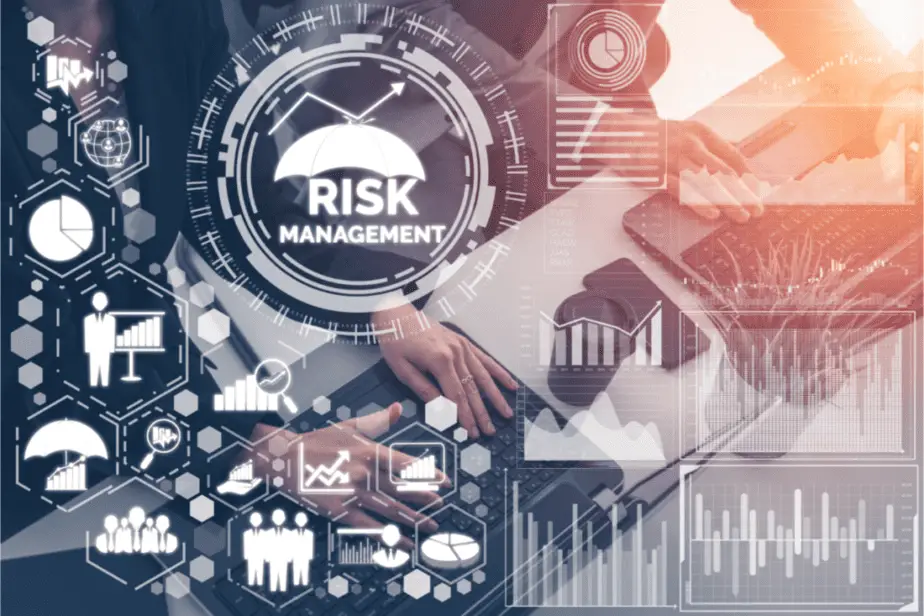
Navigating the unpredictable waters of the business world requires a steadfast compass, and that compass is risk management. Understanding how to effectively assess, mitigate, and harness risk is an indispensable skill for entrepreneurs and business leaders alike. In this comprehensive guide, we will delve deep into the art of risk management, exploring the methodologies, strategies, and real-world applications that can make the crucial difference between success and failure. Whether you’re embarking on a new entrepreneurial journey or seeking to bolster your organization’s resilience, you’ve embarked on the right path to mastering the delicate art of managing risk.
Risk management is the process of identifying, assessing, and systematically prioritizing potential risks. It involves developing strategies to mitigate or capitalize on these risks to achieve business objectives effectively and securely.
In the world of business and decision-making, understanding and effectively managing risks is paramount to success. In this comprehensive guide, we will delve deep into the intricacies of risk management, covering everything from risk identification and assessment to risk mitigation and monitoring. Whether you’re a seasoned business professional or just embarking on your entrepreneurial journey, the insights and strategies shared here will equip you with the tools to navigate uncertainties and make informed decisions. So, keep reading to unlock the secrets of successful risk management and fortify your path to achieving your objectives.
Risk Identification

Identifying potential risks in business is a crucial step in the risk management process. It involves systematically assessing various aspects of your operations to uncover potential threats. Here’s a simplified breakdown of the process:
1. Brainstorm and List: Begin by gathering your team or key stakeholders for a brainstorming session. Encourage open dialogue and creativity to generate a list of potential risks. These can include external factors like market volatility, competition, and regulatory changes, as well as internal factors like financial stability, employee turnover, and technology vulnerabilities.
2. Categorize Risks: Once you have a comprehensive list, categorize the risks into different groups. Common categories include financial risks, operational risks, strategic risks, compliance risks, and reputational risks. This step helps in organizing and prioritizing risks effectively.
Remember that identifying potential risks is an ongoing process. As your business evolves, new risks may emerge, and existing ones may change in nature. Regularly revisit and update your risk assessment to stay ahead in managing potential challenges effectively.
here are examples of common risks in various industries:
- Financial Services Industry:
- Market Risk: Fluctuations in financial markets affect the value of assets.
- Credit Risk: Borrowers defaulting on loans or credit obligations.
- Regulatory Risk: Changes in financial regulations impacting operations.
- Healthcare Industry:
- Patient Safety Risk: Medical errors or adverse events harming patients.
- Compliance Risk: Non-compliance with healthcare regulations and laws.
- Cybersecurity Risk: Data breaches and patient information security.
- Technology Industry:
- Cybersecurity Risk: Data breaches, hacking, and security vulnerabilities.
- Intellectual Property Risk: Theft or infringement of patents, copyrights, and trademarks.
- Rapid Technological Change: Obsolescence of products and services.
- Manufacturing Industry:
- Supply Chain Risk: Disruptions in the supply chain affecting production.
- Quality Control Risk: Defective products leading to recalls or lawsuits.
- Environmental Risk: Fines or legal actions for non-compliance with environmental regulations.
- Retail Industry:
- Competition Risk: Intense competition affecting market share and pricing.
- Inventory Risk: Overstock or understock of products impacting profitability.
- Consumer Trends Risk: Shifts in consumer preferences and buying behavior.
- Construction Industry:
- Safety Risk: Workplace accidents and injuries to workers.
- Project Delays Risk: Unforeseen delays affecting project timelines and costs.
- Regulatory Compliance Risk: Violations of building codes and regulations.
- Hospitality Industry:
- Reputation Risk: Negative reviews and incidents impacting brand image.
- Economic Downturn Risk: Reduced travel and leisure spending during economic downturns.
- Natural Disaster Risk: Damage or closures due to hurricanes, earthquakes, etc.
- Agriculture Industry:
- Weather Risk: Crop failure due to adverse weather conditions.
- Price Volatility Risk: Fluctuations in commodity prices affecting revenue.
- Environmental Risk: Soil degradation and pollution issues.
These are just a few examples, and every industry faces its unique set of risks. Identifying and effectively managing these risks is essential for the long-term success and sustainability of businesses in their respective sectors.
Risk Assessment

- Risk Prioritization: Start by ranking risks based on their potential impact and likelihood of occurrence. Focus on high-priority risks that could have the most significant consequences.
- Risk Analysis: Analyze each high-priority risk in detail. Consider its potential consequences, costs, and the likelihood of occurrence. Use data and historical information when available.
- Risk Quantification: Assign numerical values to risks to measure their potential impact. This could involve assigning a monetary value to potential losses or using a scale to gauge severity.
- Risk Mitigation Planning: Develop strategies to reduce the impact or likelihood of each risk. This may include risk avoidance, risk transfer (e.g., insurance), risk reduction measures, or contingency plans.
- Cost-Benefit Analysis: Evaluate the cost of risk mitigation measures against the potential cost of the risk itself. Determine if the proposed actions are cost-effective.
- Decision-Making: Based on the analysis and cost-benefit assessment, make informed decisions about which risks to mitigate, accept, or monitor closely.
- Documentation: Maintain clear records of the risk assessment process, including identified risks, their assessments, and mitigation plans. This documentation aids in ongoing risk management and compliance.
- Review and Iteration: Regularly review and update the risk assessment as circumstances change. New risks may emerge, and existing ones may evolve.
By following these steps, businesses can systematically assess identified risks and make informed decisions on how to manage them effectively, thereby reducing their potential impact on operations and objectives.
Prioritizing risks based on their potential impact and likelihood involves a structured approach to assess and rank risks effectively. Here’s a step-by-step process:
- Identify Risks: Start by identifying all potential risks that could affect your business or project. Encourage input from various stakeholders to ensure a comprehensive list.
- Define Impact Criteria: Establish clear criteria for assessing the potential impact of each risk. Impact can include financial, operational, reputational, and other relevant factors. Create a scale or scoring system to quantify impact.
- Define Likelihood Criteria: Similarly, define criteria for assessing the likelihood of each risk occurring. Likelihood factors may include historical data, expert opinions, and external factors. Use a scale or scoring system to quantify likelihood.
- Assess Each Risk: Evaluate each identified risk against the impact and likelihood criteria. Assign scores or values to measure the potential impact and likelihood.
- Calculate Risk Scores: Calculate a risk score for each risk by multiplying its impact and likelihood scores. This generates a numerical value that reflects the overall risk.
- Rank Risks: Arrange risks in descending order based on their calculated risk scores. The risks with the highest scores represent the top priority risks.
- Categorize Risks: Group risks into categories based on their scores. For instance, high-priority risks might be categorized as “Critical,” moderate-priority as “Medium,” and low-priority as “Low.”
- Review and Adjust: Regularly review and update the risk assessment as new information becomes available or circumstances change. Risks may evolve, and their impact and likelihood can shift over time.
- Communication: Share the prioritized risk list with relevant stakeholders, including decision-makers and team members. Ensure everyone understands the rationale behind the rankings.
- Action Planning: Develop risk mitigation or management plans for the high-priority risks. Allocate resources and assign responsibilities for implementing these plans.
Prioritizing risks in this manner allows organizations to focus their attention and resources on the most critical threats, ensuring that they address potential issues proactively and effectively.
Quantitative and qualitative risk assessment are two distinct approaches used to evaluate risks in various contexts. Here, we’ll explore each method and highlight their differences:
Quantitative Risk Assessment:
- Objective and Numerical: Quantitative risk assessment involves assigning numerical values to various risk factors, such as the probability of an event occurring and the potential impact or consequences if it does. This approach is highly objective and relies on statistical data and mathematical modeling.
- Data-Driven: It relies heavily on historical data, statistical analysis, and probability theory. This makes it well-suited for industries where data is abundant, such as finance and insurance. For example, in financial risk assessment, quantitative models may predict stock price movements.
- Scenario Analysis: Quantitative risk assessment often employs scenario analysis and simulations to model different outcomes. Monte Carlo simulations, for instance, can simulate thousands of scenarios to estimate the range of potential outcomes and associated probabilities.
- Risk Metrics: Common risk metrics used in quantitative assessment include Value at Risk (VaR), Expected Loss, and Standard Deviation. These metrics provide a clear quantification of risk exposure.
Qualitative Risk Assessment:
- Subjective and Descriptive: Qualitative risk assessment, in contrast, relies on descriptive and subjective methods to evaluate risks. Instead of assigning numerical values, it uses words and categories to express the likelihood and impact of risks.
- Expert Judgment: It often relies on expert judgment, brainstorming, and expert opinions to identify and assess risks. This makes it suitable for situations where historical data is limited or less relevant.
- Simplicity and Accessibility: Qualitative assessment is simpler to implement and more accessible to a broader audience. It’s often used in project management, where project teams may employ techniques like Risk Probability and Impact Assessment (qualitative risk analysis).
- Risk Categories: Risks are categorized qualitatively as high, medium, or low, or using similar descriptors. Qualitative risk matrices are commonly used to visualize risks based on their likelihood and impact.
In practice, organizations often use a combination of both quantitative and qualitative risk assessment approaches to gain a comprehensive understanding of risks. Quantitative methods provide precise metrics and can be crucial for complex financial and technical assessments. Meanwhile, qualitative methods offer valuable insights into the nature of risks, especially in situations where data may be scarce or where expert judgment is essential. The choice between these approaches depends on the specific context, the availability of data, and the goals of the risk assessment.
Risk Mitigation

Mitigating risks is a critical step in the risk management process. Here, we’ll delve into effective strategies for reducing or eliminating identified risks, the importance of risk mitigation plans, and real-world examples of successful risk mitigation efforts.
Strategies for Risk Mitigation:
Risk mitigation involves taking proactive measures to lessen the impact or likelihood of identified risks. Some common strategies include:
- Risk Avoidance: In some cases, the best way to deal with a risk is to avoid it altogether. For example, a company might choose not to enter a highly volatile market to prevent potential financial losses.
- Risk Reduction: This strategy focuses on minimizing the severity or likelihood of a risk. It might involve improving security measures to reduce the risk of data breaches or implementing safety protocols to prevent accidents.
- Risk Transfer: Transferring risk involves shifting responsibility to another party. An example is purchasing insurance to transfer the financial burden of certain risks, like property damage or liability claims, to an insurance provider.
- Risk Acceptance: Sometimes, the best course of action is to accept a certain level of risk. This typically happens when the cost of mitigation outweighs the potential impact of the risk.
Risk Mitigation Plans and Implementation:
Developing a risk mitigation plan is essential to systematically address identified risks. These plans typically include:
- Risk Identification: Clearly define the risks, specifying their potential impact and likelihood.
- Mitigation Strategies: Outline the strategies and actions to reduce or eliminate each risk.
- Responsibilities: Assign responsibilities to individuals or teams for implementing mitigation measures.
- Timelines: Set deadlines for when risk mitigation measures should be in place.
- Monitoring: Establish a process for continuously monitoring and assessing the effectiveness of risk mitigation efforts.
Real-World Examples of Successful Risk Mitigation:
- SpaceX’s Rocket Reusability: SpaceX, the aerospace manufacturer, mitigated the high cost of space exploration by developing reusable rockets. This innovation significantly reduced the financial risk associated with each launch.
- Toyota’s Recall Response: When Toyota faced a recall crisis due to safety concerns with their vehicles, they implemented an effective risk mitigation strategy by swiftly recalling affected vehicles, addressing the issues, and improving their quality control processes.
- Amazon’s Data Security: Amazon mitigates the risk of data breaches by investing heavily in cybersecurity measures and continuously improving its systems to protect customer data.
- Pharmaceutical Clinical Trials: In the pharmaceutical industry, rigorous clinical trials are conducted to mitigate the risks associated with potential side effects of new medications, ensuring they meet safety and efficacy standards.
These examples illustrate the importance of proactive risk mitigation in various sectors, highlighting its role in safeguarding businesses and projects from potential harm.
Risk Monitoring and Control

Effective risk management doesn’t stop at identification and mitigation—it extends into continuous monitoring and control. In this section, we’ll explore the significance of ongoing risk monitoring, the role of key performance indicators (KPIs) in risk control, and the flexibility required to adapt risk management strategies as circumstances evolve.
Importance of Continuous Risk Monitoring:
Continuous risk monitoring is vital because risks are dynamic and can evolve over time. Here’s why it matters:
- Early Detection: Monitoring allows for the early detection of emerging risks or changes in the risk landscape. This early warning system enables organizations to respond promptly and prevent potential issues from escalating.
- Adaptive Decision-Making: Continuous monitoring provides the data needed for adaptive decision-making. It helps in evaluating whether the implemented risk mitigation measures are effective and whether adjustments are necessary.
- Compliance and Reporting: Many industries have regulatory requirements that necessitate ongoing risk monitoring and reporting. Ensuring compliance is essential to avoid penalties and legal issues.
Establishing Key Performance Indicators (KPIs) for Risk Control:
KPIs are essential tools for measuring the effectiveness of risk control measures. Here’s how to establish them:
- Identify Objectives: Determine what you aim to achieve with risk control. This could include reducing the number of incidents, minimizing financial losses, or maintaining a certain level of operational stability.
- Select Relevant Metrics: Choose metrics that align with your objectives. For instance, if your goal is to reduce workplace accidents, metrics like the number of safety incidents and near-misses are relevant.
- Set Targets: Define specific targets or thresholds for each KPI. These targets serve as benchmarks for success and provide clarity on what constitutes effective risk control.
- Regular Measurement: Continuously measure and track the selected KPIs. Modern software and data analytics tools can automate this process, providing real-time insights.
Adapting Risk Management Strategies:
Risk management isn’t static; it must evolve as circumstances change. Here’s how to adapt:
- Regular Review: Conduct regular reviews of your risk management strategies. Assess their relevance and effectiveness in the current environment.
- Scenario Planning: Develop contingency plans for different scenarios, including worst-case scenarios. This proactive approach allows for rapid adaptation when unexpected events occur.
- Communication: Maintain open channels of communication within your organization. Encourage employees to report emerging risks or changes in conditions.
- Flexibility: Be prepared to adjust risk management strategies swiftly. Flexibility is crucial in responding to unforeseen challenges.
By emphasizing continuous monitoring, utilizing KPIs, and maintaining flexibility, organizations can enhance their ability to control risks effectively and adapt to a rapidly changing world.
Case Studies
Case Study 1: Financial Risk Management in Banking
In the wake of the 2008 financial crisis, banks and financial institutions faced intense scrutiny and increased regulatory requirements. One institution that exemplified effective risk management during this turbulent period is JPMorgan Chase.
Scenario: JPMorgan Chase was exposed to significant risks from its derivatives trading activities. A massive trading loss in 2012, famously known as the “London Whale” incident, raised concerns about risk management practices.
Risk Management Approach:
- Enhanced Oversight: Following the incident, JPMorgan Chase intensified its risk oversight and controls. They strengthened the risk management committee and hired additional risk experts.
- Advanced Analytics: The bank invested in advanced risk analytics and modeling capabilities to better understand and quantify risks associated with its trading activities.
- Improved Reporting: JPMorgan Chase improved risk reporting systems to provide real-time data to decision-makers, allowing for swift actions when risks exceeded predefined thresholds.
Outcome: These risk management measures helped JPMorgan Chase recover from the trading loss and regain market confidence. They also led to a significant shift in the banking industry’s approach to risk management, with greater emphasis on transparency and control.
Case Study 2: Operational Risk Management in Healthcare
Effective risk management is crucial in healthcare, where patient safety is paramount. The Mayo Clinic, renowned for its patient care, provides an exemplary case.
Scenario: The Mayo Clinic faced the challenge of ensuring patient safety while delivering complex medical procedures across multiple facilities.
Risk Management Approach:
- Standardized Protocols: The Mayo Clinic implemented standardized protocols and checklists for medical procedures, reducing the likelihood of errors and complications.
- Continuous Training: Medical staff received continuous training and simulation exercises to improve their response to critical situations and reduce medical errors.
- Data-Driven Decision-Making: The clinic employed data analytics to identify patterns and potential risks, allowing for proactive interventions.
Outcome: The Mayo Clinic’s rigorous risk management practices have contributed to its reputation for exceptional patient care and safety. By embracing a culture of continuous improvement and data-driven decision-making, they’ve set a high standard for risk management in healthcare.
These case studies illustrate the diverse applications of risk management in different sectors and emphasize the importance of proactive measures in mitigating risks and achieving success.
Conclusion
Proactive risk management is a vital practice for achieving success and sustainability across industries. It entails early identification, data-driven decision-making, and addressing diverse risk categories such as financial, operational, and strategic risks. Continuous monitoring and expert judgment are essential components of an effective risk management strategy. Real-world success stories from organizations like JPMorgan Chase and the Mayo Clinic underscore the benefits of proactive risk management. In essence, this approach is not merely a defensive measure but a proactive strategy that empowers organizations to navigate challenges and capitalize on opportunities in a dynamic business environment, safeguarding their reputation and long-term viability.
.

